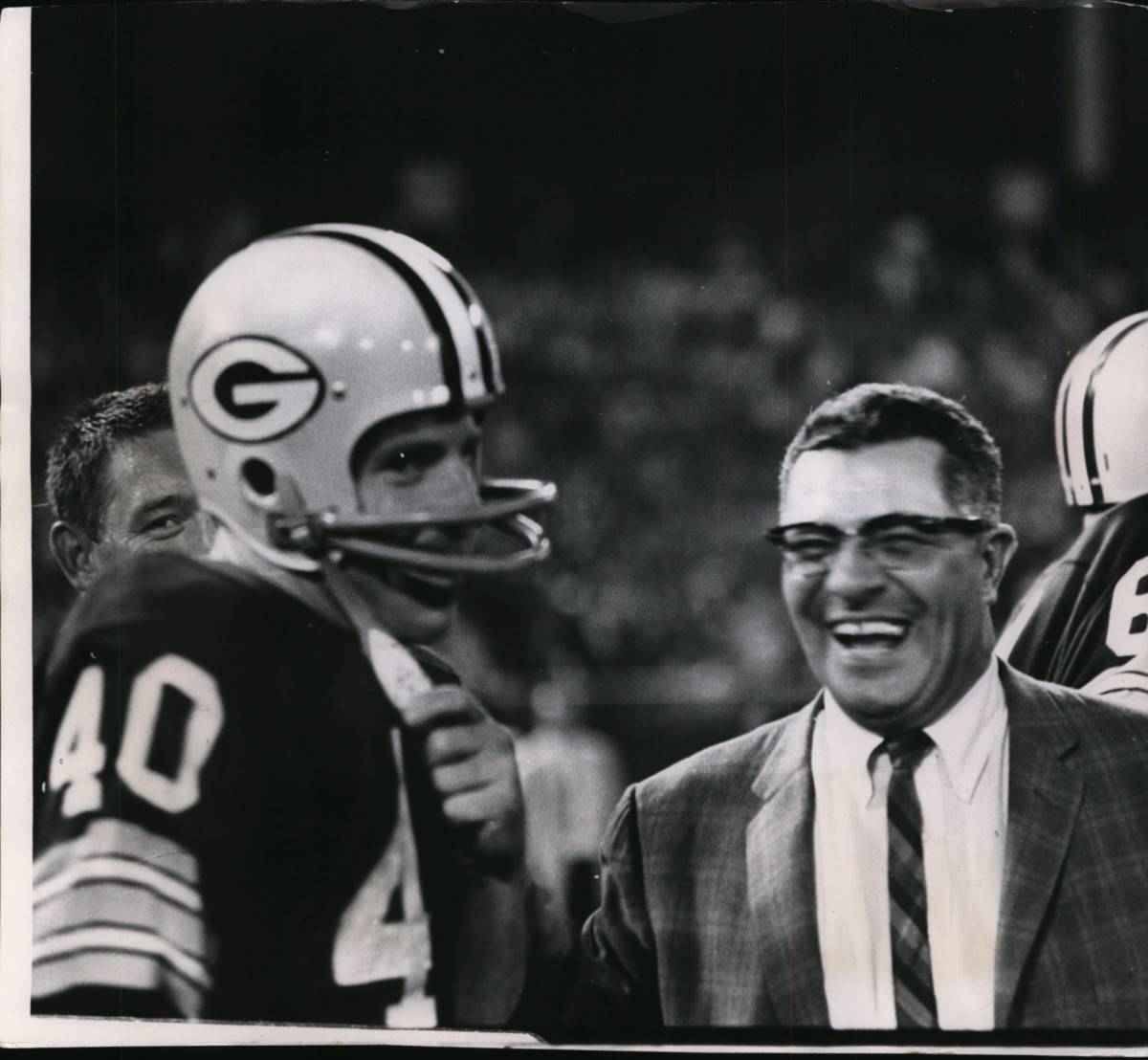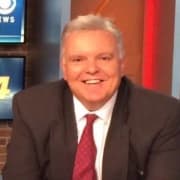How New Orleans got an NFL Team, by Mike Detillier - Part 3
In 2003, then WWL Radio Sports Director, Buddy Diliberto, spoke to me about obtaining as much information as possible on how New Orleans got an NFL team.
Diliberto first covered the beginning of getting a professional football team in the newspaper business and then covered the New Orleans Saints on television and the radio.
We both went to a host of different sources to get the behind the scenes information for the book, but in early 2005 Diliberto passed away, and I put our information away.
In this nine-part series on "How New Orleans got an NFL Team," I will give you the information from a host of sources. Mainly the most vital piece to get the New Orleans Saints was Dave Dixon. Dixon worked behind the scenes to place a team in New Orleans, and later he became the Father of the Louisiana Superdome.
PART 3
This report is directly from our interviews with Dave Dixon...
With not being able to land the Dallas Texans/now, the Kansas City Chiefs, Dave Dixon and the committee to bring professional football to New Orleans started to lay the groundwork on getting preseason games played in Tulane Stadium.
“We wanted to prove to the NFL that we could support an NFL team in New Orleans, and our only way to do this was to make an impressive showing with pre-season games,” Dixon said. “In 1963, we were able to land a doubleheader exhibition event. It was only the second time in NFL history that the NFL had a doubleheader format. We got the Dallas Cowboys to play the Detroit Lions a How New Orleans Got an NFL Team…" Dave Dixon
I wanted New Orleans to be the first Southern city to sell first-come, first-served football tickets. This was 1963, so the Civil Rights Act had not even passed yet in Congress. The Civil Rights Act was voted on, approved, and then signed in the summer of 1964. The state of Louisiana had their laws, but the NFL had their laws too, and they made it clear to me that Tulane Stadium would have to be integrated. The NFL would not allow us to play in a segregated stadium. Joe Bernstein was our legal counsel and was tremendous in his help to land an NFL team, set everything up.
At one time, Tulane Stadium had a section in the south endzone for black fans to watch games. Maybe 5,000 seats at the most, and that section was eliminated immediately. No matter the color of your skin, you could buy a ticket and sit wherever you wanted to.
So I went after the sup port of William Clay Ford, he was the youngest son of Edsel Ford and the owner of the Detroit Lions and Henry Ford, II, chairman of the Ford Motor Company. Henry Ford II was the president of the Ford Foundation, which would give large grants to colleges. I knew Tulane University was the beneficiary of large grants from the Ford Foundation. So I spoke to Eddie Anderson, the President and General Manager of the Lions at that time, and asked if William Ford could ask Tulane University for a formal request to use Tulane Stadium.
Eddie told me, “David, write the request yourself, and I will get Mr. Ford to send it to Tulane’s president and committee.”
Mr. Ford sent the letter exactly as I wrote it. It got approved quickly. Tulane University was not going to mess around with someone with that many zeros in his checkbook. Bill Ford was exceptional in trying to convince the NFL owners the league should expand to the Deep South.”
A DOUBLEHEADER HELPS THE CAUSE
With that approved, Dixon had another hurdle to jump to make sure he could pull off the exhibition doubleheader.
“Well, you have to remember that Tulane Stadium was uptown, and parking was limited. If you went to games at Tulane Stadium, you had a bit of a walk to attend and sometimes more than a bit to walk. Many of the neighbors feared that something could happen and possibly a violent confrontation with folks attending. This isn’t ancient history I’m talking about, I’m talking about 1963.
So to satisfy certain influential people, we hired over 200 off-duty New Orleans policemen, brought in over 3 dozen state troopers, and had to purchase an insurance policy from Lloyds of London to assure everyone it would be safe. Again, it seems unreal to believe that happened, but that was the times back then. You look back, and you would think it was pre-Civil War days, but that happened on my watch.”
Tickets to the game were brisk, and it became a huge success for New Orleans and Dixon.
“We had over 51,000 attend the doubleheader game. As a group, we came up with ticket prices at $6.00 and $8.00. The appeal of watching two NFL preseason games was enormous, and we made $330,000, which was at that time the largest gate ever for an exhibition game. But Mother Nature didn’t cooperate very well. In the third quarter of the first game, it started to rain, and according to Nash Roberts, we got over 2 ½ inches of rain in less than 45 minutes. Back then, we didn’t flood as easily as we do now. But we had a long rain delay and both games were played without an incident. I was so proud of our city and what it did to project the interest in football, and the second game actually ended after 1:00 AM.
Back then, you dressed up for football games, just like you did to ride an airplane or go to Mass, today its different-and that’s the world we live in, but with the rain, I probably created over $100,000 worth of wet hair and re-dos the next week. George Halas, the head coach and owner of the Chicago Bears was very impressed with what we did.
But that night, the idea to build the Louisiana Superdome was given permanent life in my mind, and it never went away.”
Dixon said the NFL took notice of the event and were happy to work with him and the city of New Orleans for more pre-season games.

LOMBARDI HELPS NEW ORLEANS
“We were able to land another exhibition game in 1964 where the St. Louis Cardinals played the Green Bay Packers, and we had over 75,000 at Tulane Stadium. It was the biggest draw in a non-league city at that time. And we had won over a friend in Vince Lombardi, the legendary coach for the Green Bay Packers, and he was very influential behind the scenes. Lombardi loved New Orleans, and he would be an advocate for us to sell New Orleans to the NFL crowd. And our friend Buddy Diliberto took him out to lunch leading up to the game, and he got him hooked on Barq’s Root Beer. Can you imagine the conversation with Buddy D. and Lombardi? But after Vince drank his first cold bottle-that was it, and Coach had me set him with a distributor that would get him Barq’s in Green Bay.
By golly, we had done it and sold the NFL on New Orleans as a football town. We wanted the next expansion team given, and the Commissioner (Pete Rozelle) assured me New Orleans was in the hunt.”
In 1965, the Baltimore Colts returned to play the St. Louis Cardinals. Then Times-Picayune columnist/reporter Buddy Diliberto had an interview set up by Commissioner Pete Rozelle with St. Louis Cardinals owner Bill Bidwell.
“What a waste of my time to talk to that guy,” Buddy D. said. “Bill’s dad was a great guy, Charley Bidwell, and Mr. Charley was heavily involved in the horse racing world. Just a terrific person, but the son, Bill Bidwell, he complained about everything from the parking, how people entered the stadium and how it was a late-arriving crowd.
I told Bill Bidwell, “This is New Orleans, and they are used to the parking here, and it’s always a late-arriving crowd to games, but they support football at the highest level. They drew over 60,000 people for a preseason game. And so I told Bidwell how do you think they should enter the stadium-with a helicopter drop? He immediately ended the interview and walked away.
Later I found out from Pete Rozelle that Bill Bidwell was not supporting any Southern team. At that time, the NFL considered Dallas part of the West Coast. I’m not kidding about that. They had no teams in the Deep South. No Atlanta, no teams in Florida, no team in Carolina, no team in Tennessee and, no team in New Orleans and, Bidwell wanted to keep it that way. In a league now fighting for college players and many of them from schools from the Southeast Conference and the old Southwest Conference, Bidwell wanted to say he was the champion of Southern football. He forgot that team in Dallas was building up some strong talent from the South too. Let me just say, John Mecom, Jr., was a bad NFL owner, but Bidwell was in his zip code of bad too.”
Dave Dixon said he knew about some owners in the NFL hesitancy to give new franchises to Southern-based cities, but that he was also fighting foes from the city of New Orleans itself and in particular the newspaper- the Times Picayune.
